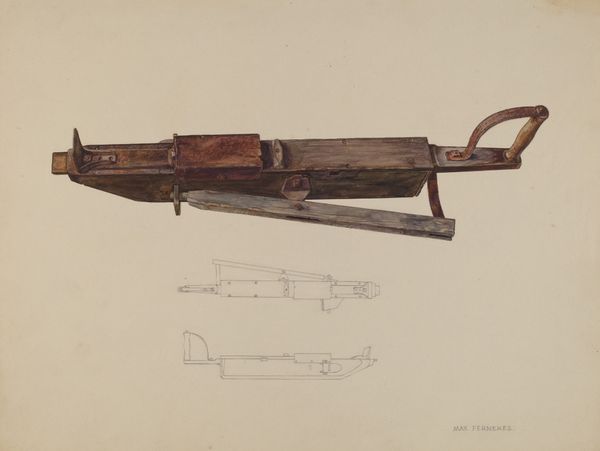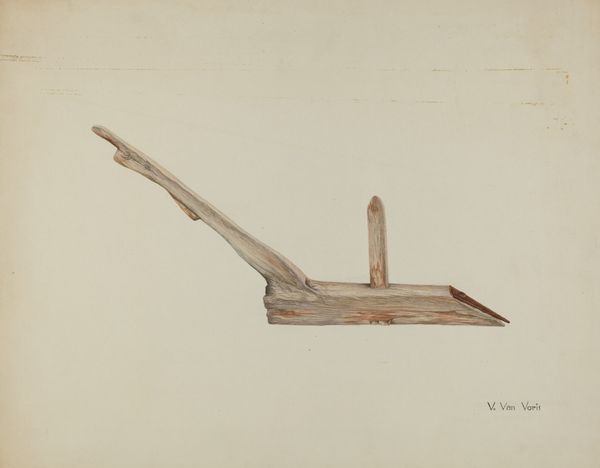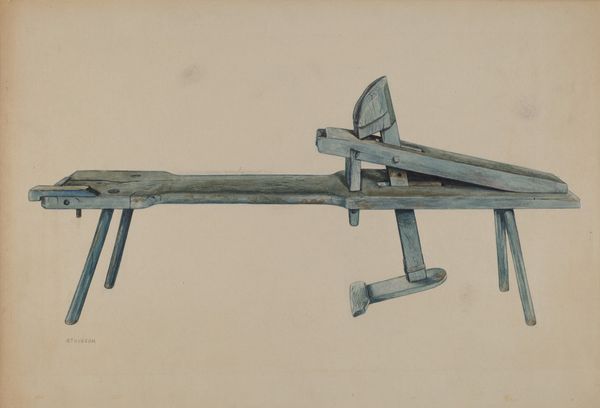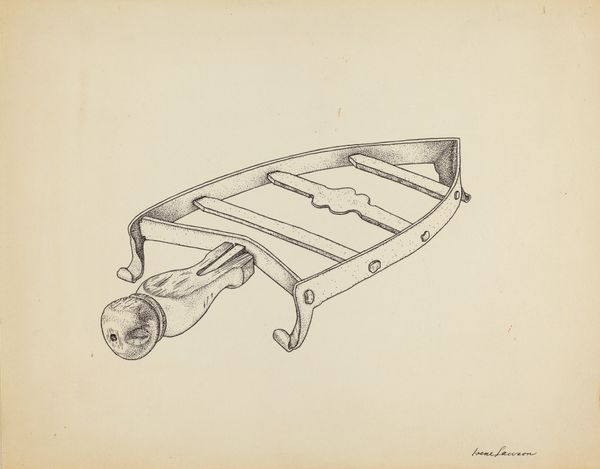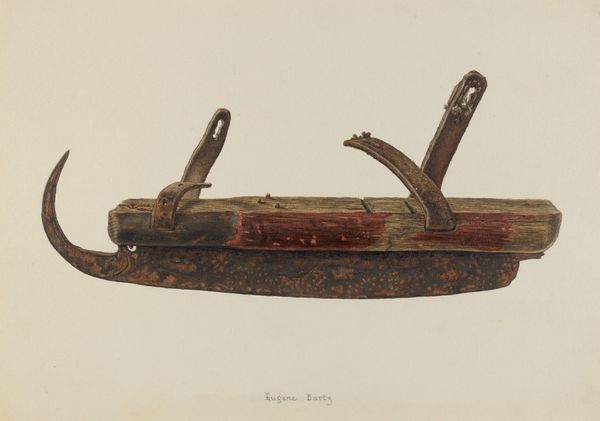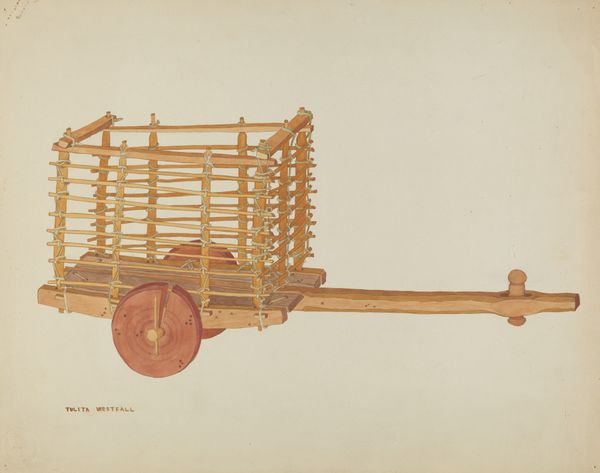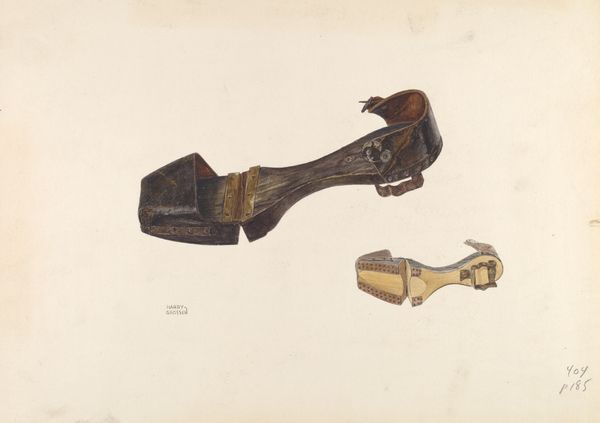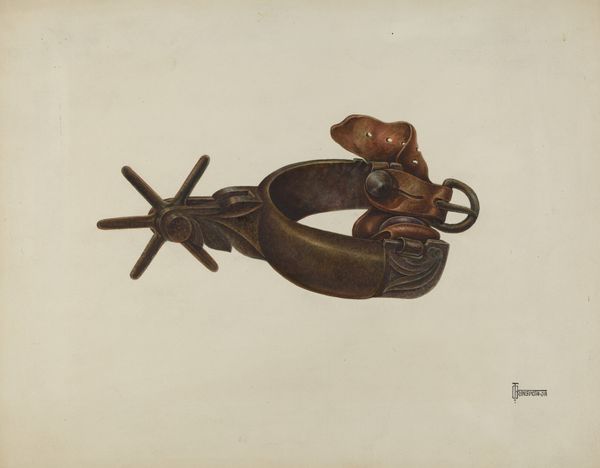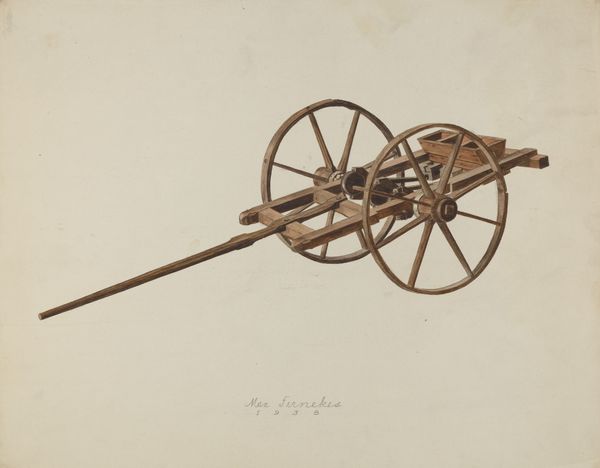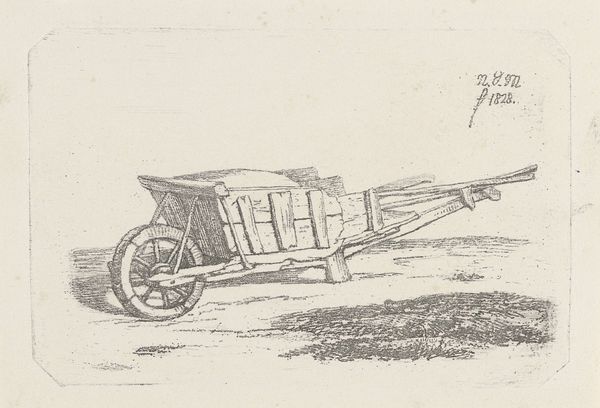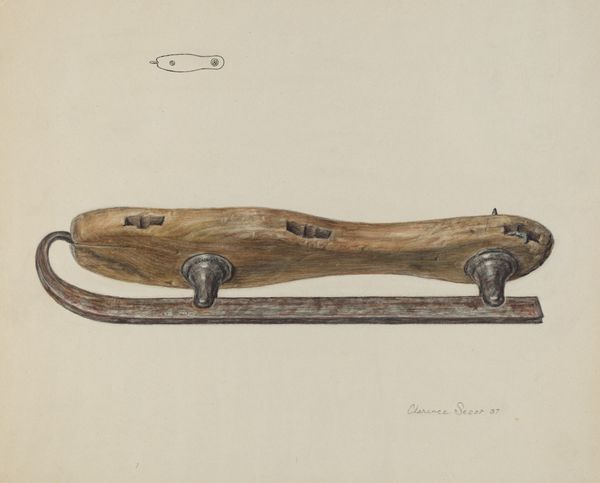
drawing, watercolor, pencil
#
drawing
#
watercolor
#
pencil drawing
#
pencil
#
realism
Dimensions: overall: 25 x 35.6 cm (9 13/16 x 14 in.)
Copyright: National Gallery of Art: CC0 1.0
Curator: This watercolor and pencil drawing, entitled "Wheel Barrow," dates back to around 1938 and is by Geoffrey Holt. What are your immediate impressions? Editor: Well, I'm struck by how worn and used it looks, even as just an image. The artist really captures the textures and the history ingrained in this simple tool. It speaks to generations of manual labor, that cycle of hard work. Curator: Absolutely. When considering a utilitarian object such as this within the context of the 1930s, one must remember this was a time of great economic hardship, and often, survival depended on precisely this kind of labor. Everyday tools could, for certain populations, be a literal life line. Editor: That makes perfect sense. For me, the wheelbarrow itself takes on a symbolic weight. The wheel, for instance, a universal symbol of cyclical change and progress—here grounded in the most tangible of forms. It reflects an endless journey. Curator: An apt connection to cycles. During the Great Depression, it was cyclical instability of market economies that had brought the population low; an object like this might even act as a site for anxiety or disillusionment, and it can tell us how individual experiences might not coalesce perfectly within the framework of mainstream historical narratives. Editor: And that weathering effect, rendered with such detailed lines and delicate watercolor tones, also suggests resilience in the face of adversity. The marks are evidence of a working life. Curator: Precisely. Consider then the symbolism of a *male* artist like Holt rendering an item that may often have been essential for the livelihoods of both women and men, not to mention that there are distinct historical assumptions about whose labor is “valued.” And, even today, that kind of care work is still typically devalued in economic policy. Editor: Yes, that complicates my initial response. Thank you for making me see those other layers. Ultimately, I still find this quite moving. I guess it confirms the power objects have, both practical and symbolic. Curator: I agree. By examining artworks in this manner, we are empowered to interrogate the past, question our present and future trajectories, and reflect upon the multitude of ways objects influence perception and lived experience.
Comments
No comments
Be the first to comment and join the conversation on the ultimate creative platform.
